
I Have Seen the Future: The American Home
2022 | Shirley Fiterman Art Center | New York, NY
I Have Seen the Future: The American Home is a multifaceted, immersive exhibition crafted to evoke the experience of visiting the 1964 New York World’s Fair–reimagined with the hindsight of 2022. Through flocked architectural models, collage, The work delves into the propaganda circulating in 20th century visions of utopia and how these still define much of our reality today.
It recalls the tens of millions of visitors who flocked to Queens to see visions of the American Dream–a vision that melded American consumerist capitalism with politics and international relations. The exhibition exposes the underbelly of that dream, focusing on the myriad ways that utopian vision is mired in cruel policies and practices that enforce segregation, wealth and income inequality, and the general exclusion of people of color.
The exhibition also invites you to step inside the “White Flight Model Home,” a future-oriented, perfectly manicured place fit for the Space Age nuclear family. The model is accompanied by this imaginary community’s monthly circular, White Flight!. White Flight! is an ¡AGITPOP! PRESS–an ongoing collaborative practice with writer Cara Marsh Sheffler–creation, and demonstrates how suburban fences were not so much made of white pickets as they were discriminatory banking practices and an idea of normative culture that actively excluded anyone of color.
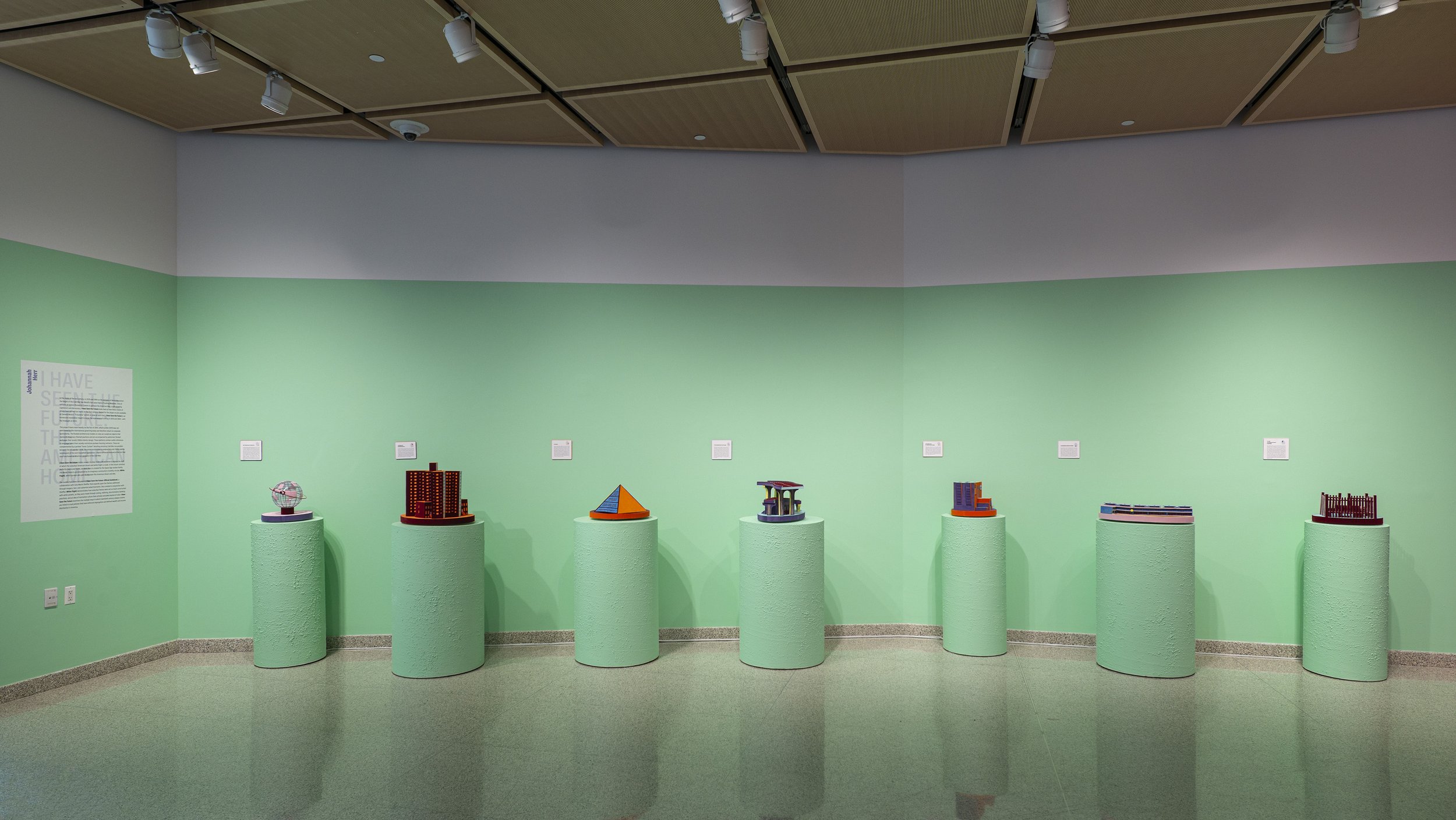
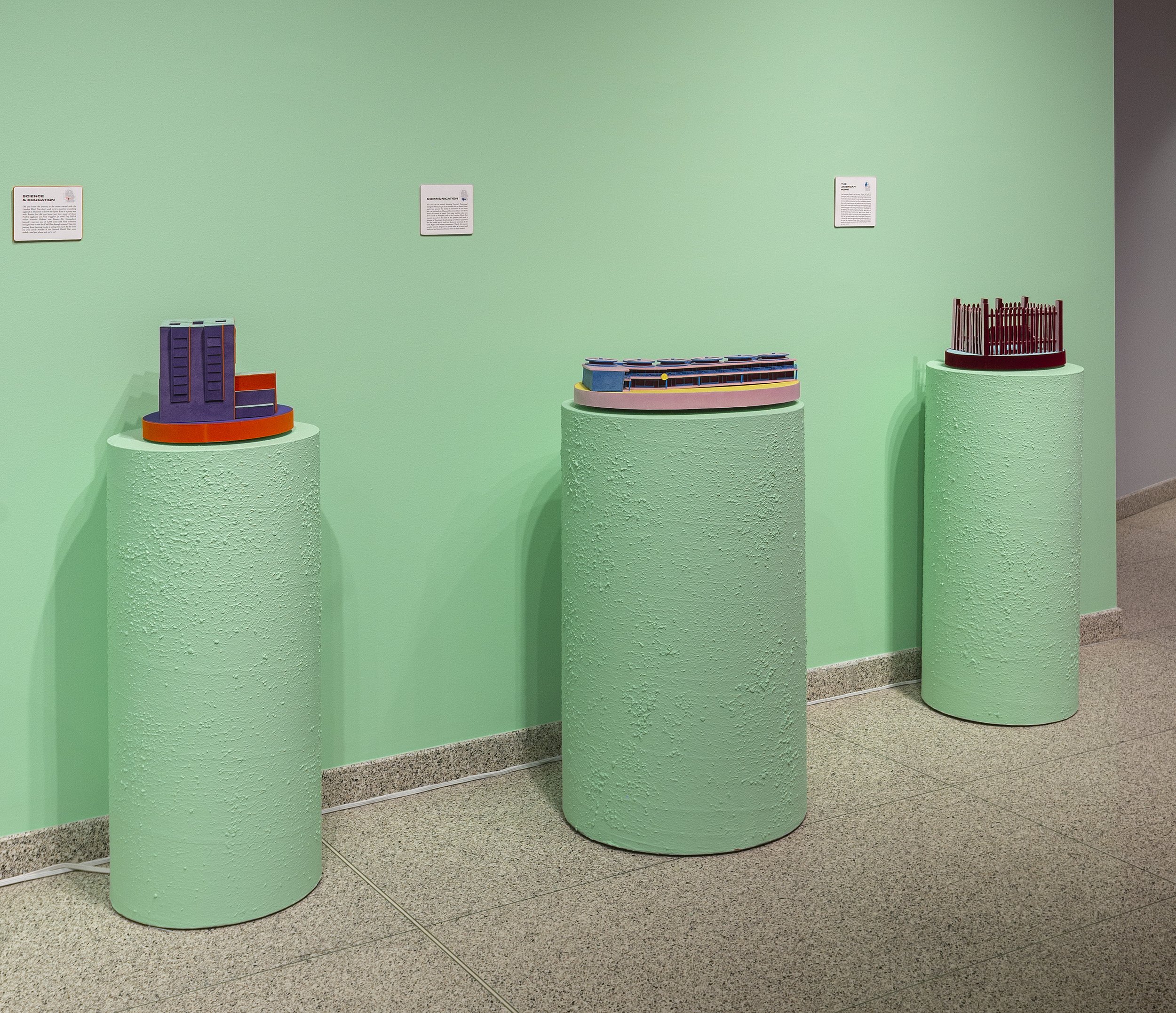
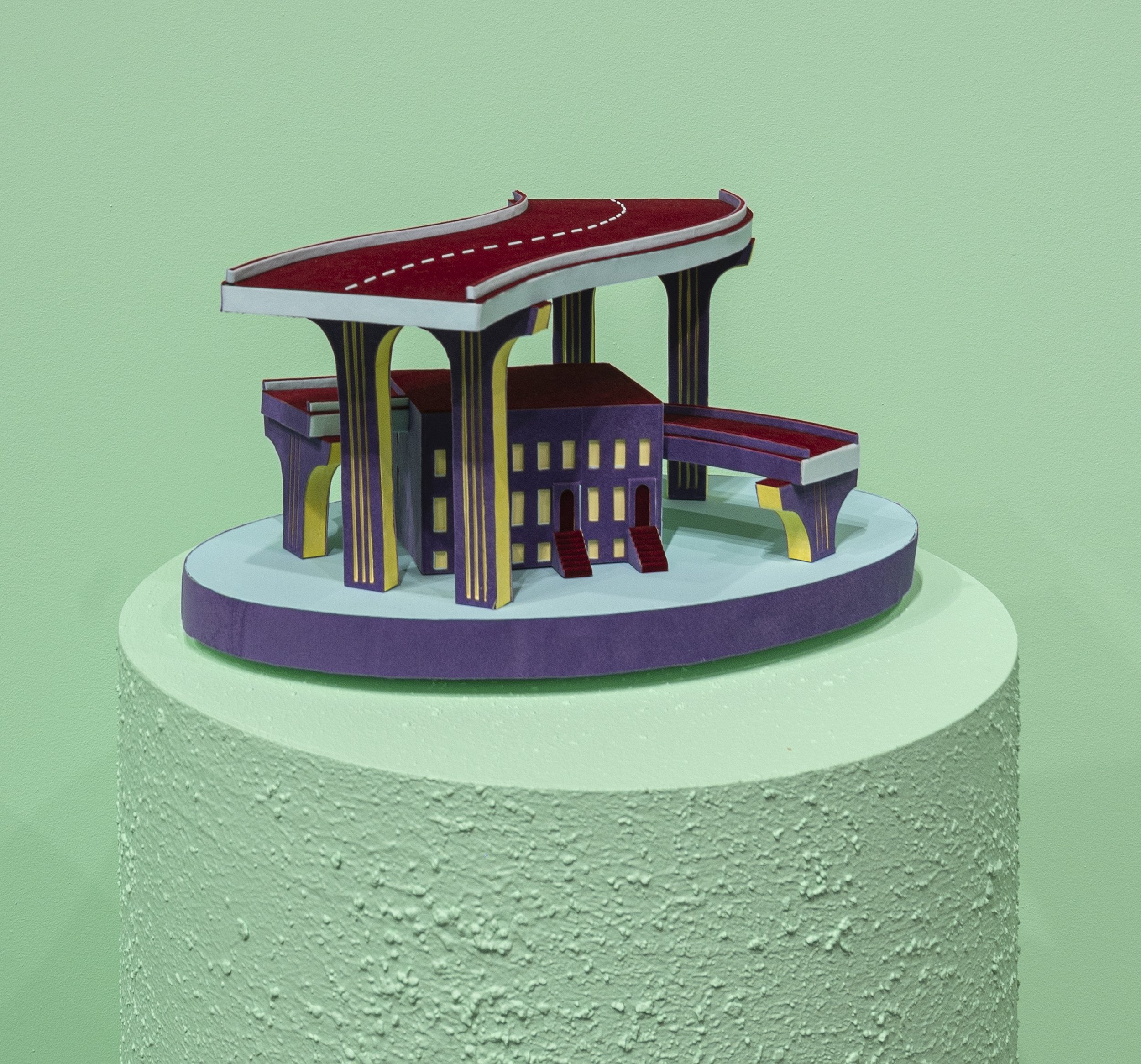

As part of the exhibition "I Have Seen the Future: The American Home," the reimagined World's Fairgrounds are organized into 7 themed areas, each represented by flocked architectural model of the area's main "pavilion." Each model hacks the form of an existing architectural structure to reference a historical event or precedent of State violence during the mid-century. See details about each individual model’s design here, from the original iteration of this exhibition at Field Projects.
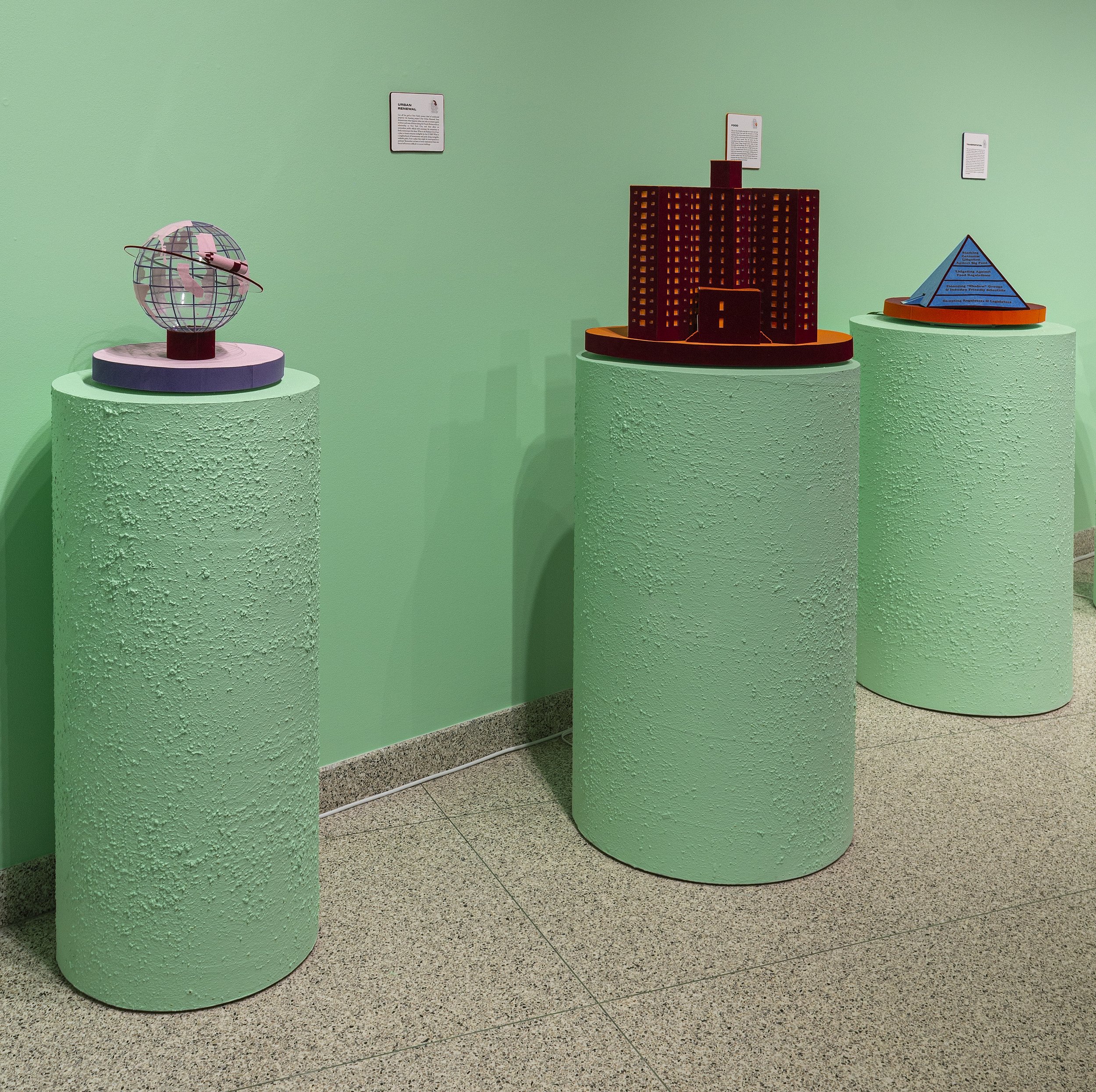

WHITE FLIGHT MODEL HOME
Embedded within the Shirley Fiterman Art Center exhibition, this installation uses a model home display as a vessel to consider the violences on which the suburban American dream is built. In this future-forward, perfectly plastic, ergonomically designed home, a space is created for the nuclear family in the Space Age. However all elements in the model subvert their forms to reference violent histories of exclusion, warfare and imperialism that America’s suburbia is predicated on. Collages reference nuclear testing, atomic anxiety, segregation, appropriative tiki culture, and the imperialist history behind lawncare, the curtain’s patterning uses imagery which draws parallels between state violence in both the US and Soviet Union, and the wallpaper is embossed with text of racially restrictive covenants from suburban housing. Meanwhile, this imaginary model community’s monthly circular—White Flight!—uses appropriated text and image to considers who gets to populate this American dream and why.



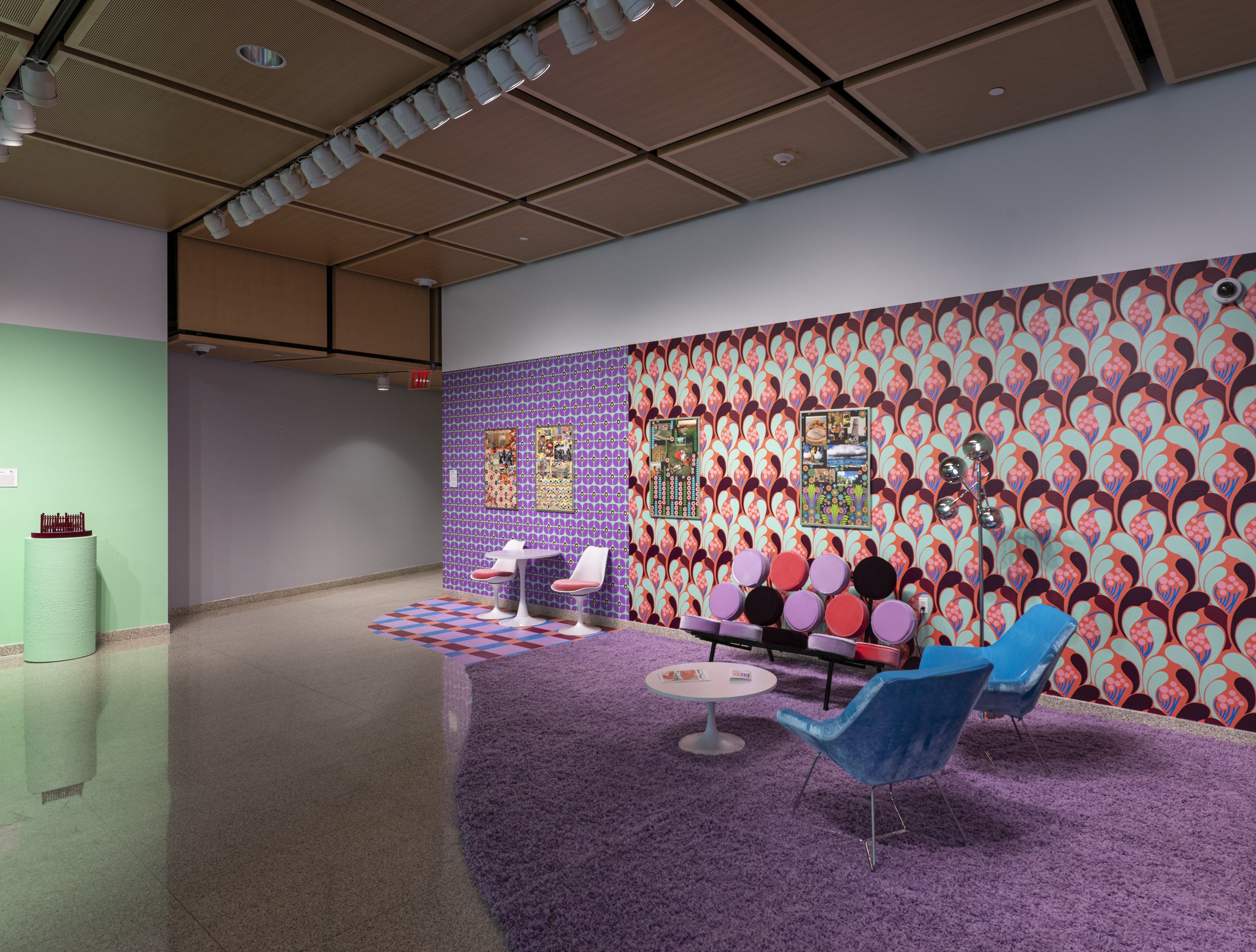
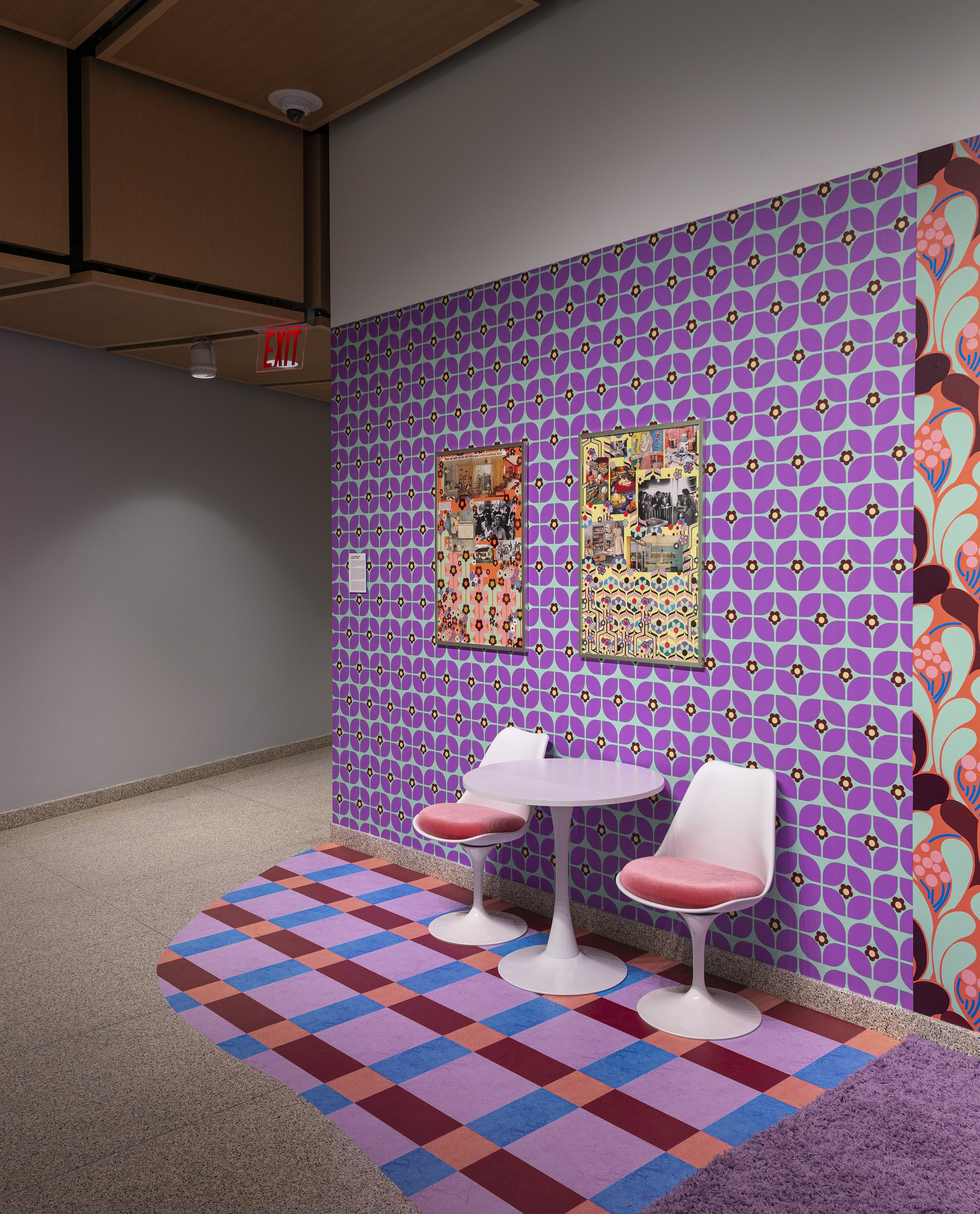
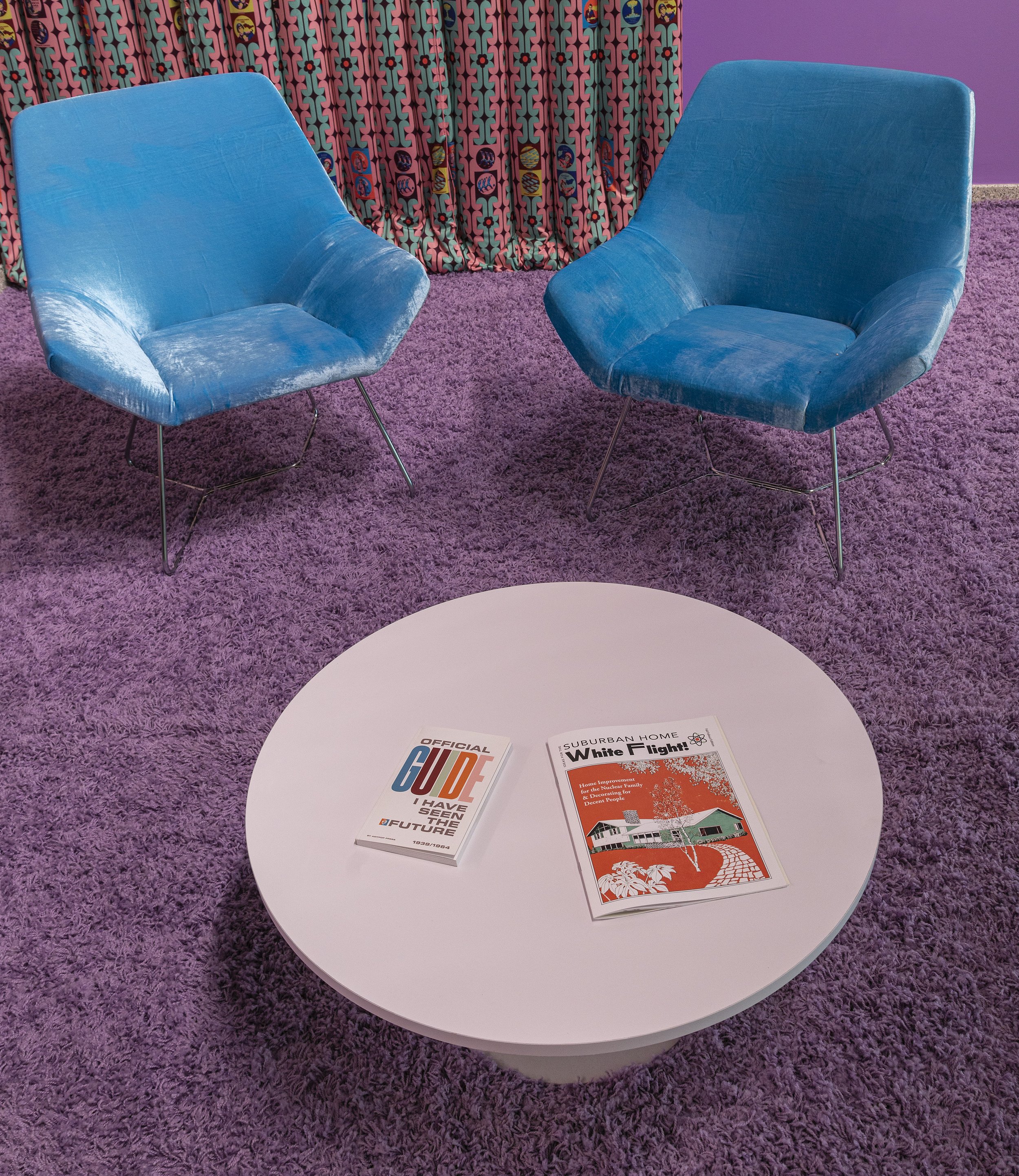
AMERICAN HOME COLLAGES
Adoring the walls of the White Flight Model Home are as series of American Home Collages which expand on the content explored in the White Flight! magazine in a more. Each collage combines archival mid-century imagery related to a different aspects of the underlying violences that construct the oft mythologized American suburbia with nylon flocking and metallic vinyl.
American Home Collage (Lawncare)
22” x 30” archival pigment print with cut vinyl and nylon flocking
Collage imagery traces the history of the suburban lawn back to the imperial lawns of English manor homes—where having a large expanse of manicured “unproductive” crop was seen as a way of showcasing wealth. This practice was brought to the colonial US by founding fathers Washington and Jefferson who modeled their estates after such English manors to include expansive lawns (which which were maintained with slave labor). In addition to being a monocultural ecological desert and requiring constant upkeep as well as watering, American lawns became ubiquitous with the suburban and who could afford to have one as opposed to living in urban spaces.
American Home Collage (The Kitchen Debate)
22” x 30” archival pigment print with cut vinyl and nylon flocking
Collage imagery references the historic “Kitchen Debate” where Nixon and Kruschev famously got into a heated argument about the merits of Communism vs. Capitalism in front of the Whirlpool Miracle Kitchen display at the 1958 Expo in Moscow. Such international expos (such as Worlds Fairs) were used as weapons in the Cold War to showcase American consumer goods as superior products to those available in the Soviet Union. The collage also includes an image from the 1939 Soviet “Book of Tasty and Healthy Food”—an iconic “cookbook” from the Soviet Union that curiously has its inspiration origins in the US. Anastas Mikoyan, the People's Commissar of the Food Industry of the USSR in the 1930s, was looking for ways the USSR could modernize food production and consumption. He travelled to the US where he was impressed by food manufacturing—as well as dishes such as the hamburger—which he would adapt and incorporate into his book, eventually becoming staples of the Russian diet.
American Home Collage (The Atomic Home)
22” x 30” archival pigment print with cut vinyl and nylon flocking
Collage imagery examines the nuclear anxiety built into the idealized suburban homes during the eight of the cold war. From DIY home bomb shelters and school fallout drills to atomic-themed children’s games and beauty pageants, the images reflect the strange duality of atomic energy as a source of power/pleasure and anxiety. Images also include the doomsday clock, Hiroshima after the US nuclear bombing, and a mushroom cloud-shaped cake being enjoyed by Navy Admiral William Purnell Blandy and his wife as they celebrate the completion of nuclear testing in the Marshall Islands, codenamed “Operation Crossroads.”
American Home Collage (Comfort & Riot)
22” x 30” archival pigment print with cut vinyl and nylon flocking
Collage imagery references the violent reaction of white communities to desegregation. Images include screaming protestors / overtly racist picketing signs from 1957’s “crisis in Levittown, PA” when the Black family The Myers moved in and their home was the site of cross burnings, vandalism, protests, and riots by angry white mobs for several days. These photos are contrasted with the idyllic images of the suburban home and housewives.
American Home Collage (Tiki Torches)
22” x 30” archival pigment print with cut vinyl and nylon flocking
Collage imagery touches on the American fascination with Tiki culture as a consumer / leisure-oriented way of imagining the South Pacific after US involvement in WWII's Pacific Theater. It includes images of atomic testing in the Marshall Islands and later images of the Runit Dome—a “nuclear coffin” where the US dumped our atomic waste from Nevada test sites on Runit island). From Fuller Brush Home Luaus to a night out at iconic tiki-themed eateries Trader Viks or The Mai Kai (where they served Chinese food, as it was an Asian food Americans were already comfortable with), Polynesian culture was conflated, appropriated and made palatable for an Orientalist experience of exotic entertainment for the home.
Exclusive Wallpaper
"Exclusive Wallpaper" are two works on paper that explore the history of housing segregation in the American suburbs. They each combine various mid-century wallpaper patterning with overlaid clear embossed text. The text is sourced from racially restrictive covenants from the US's iconic first suburb: Levittown, NY and Seattle’s Blue Ridge suburb. Each state that only people of the Caucasian race can rent or buy property in their housing development.
In the post-war years when white flight initiated a rush of new suburban housing development construction, racially restrictive covenants were a legal way to perpetuate segregation in the suburbs. Covenants stating that only Caucasian people could live or rent properties were written into the deeds of many housing developments of the era. Should the covenant be violated the owners would be evicted and the property would revert back to its original ownership. Although the Fair Housing Act of 1968 legally prohibited discrimination of the sale or rental of housing based on race, such covenants are incredibly hard to legally remove from deeds, and many properties throughout the US continue to feature such covenants to this day.
Exclusive Wallpaper (Levittown)
2022, 24in x 64in, embossed / digitally printed wallpaper
Overlaid text sourced from racially restrictive covenant found on deeds in Long Island’s Levittown development. Text reads:
The tenant agrees not to permit the premises to be used or occupied by any other persons than members of the Caucasian race…
Exclusive Wallpaper (Blue Ridge)
2022, 24in x 64in, embossed / digitally printed wallpaper
Overlaid text sourced from racially restrictive covenant found on deeds in Seattle’s Blue Ridge development. Text reads:
No person other than one of the White or Caucasian race shall be permitted to occupy any property in said addition or portion thereof or building thereon except a domestic servant actually employed by a person of the White or Caucasian race where the latter is an occupant of such property.
Exclusive Wallpaper (Levittown)
2022, 24in x 64in, embossed / digitally printed wallpaper
Overlaid text sourced from racially restrictive covenant found on deeds in Long Island’s Levittown development. Text reads:
The tenant agrees not to permit the premises to be used or occupied by any other persons than members of the Caucasian race.






